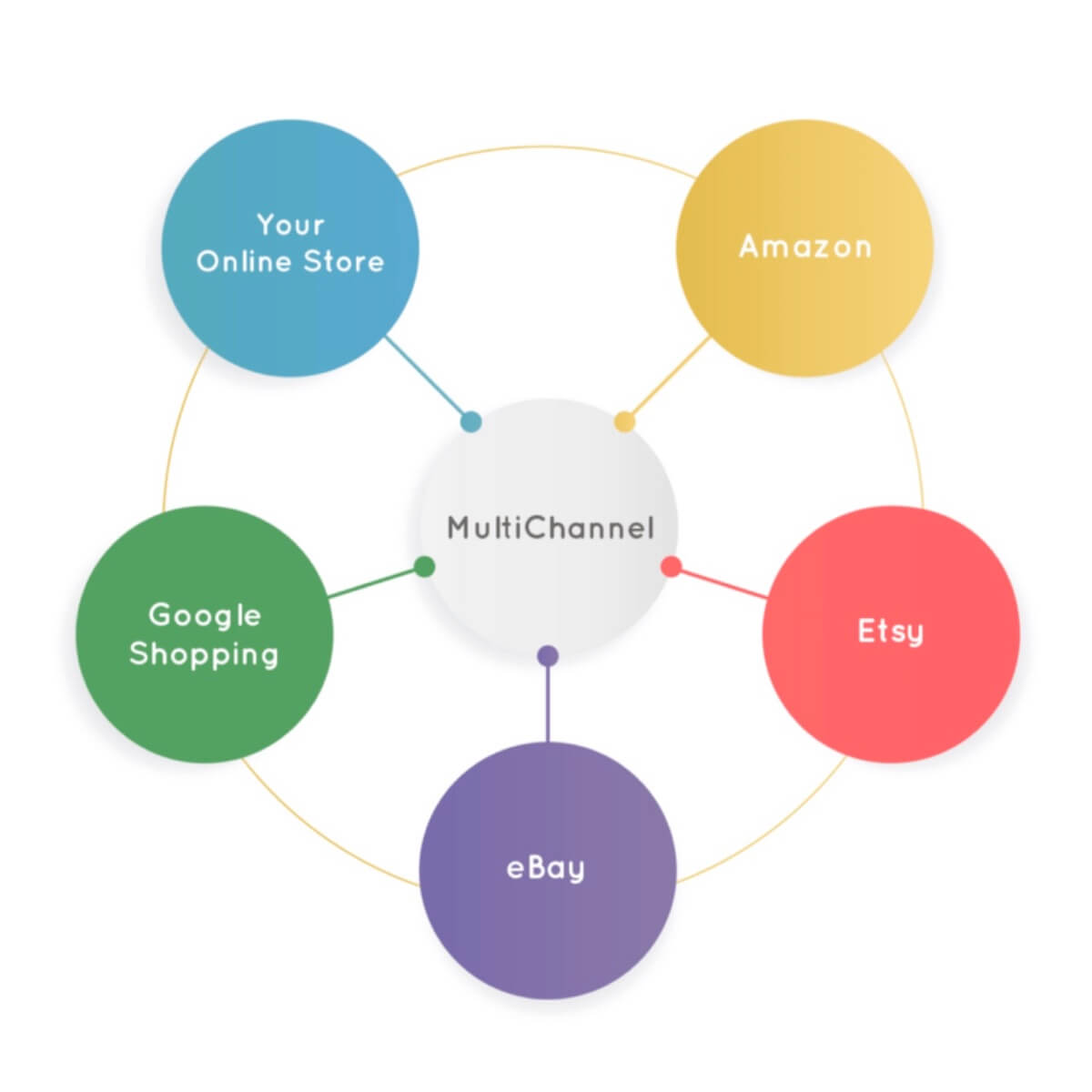
Over the last decade, we have witnessed a huge rise in the number of customers who choose online stores and marketplaces as one of their primary shopping sources.
Over the last decade, we have witnessed a huge rise in the number of customers who choose online stores and marketplaces as one of their primary shopping sources.
According to the recent survey by Internet Retailer, a staggering 92% of American consumers bought products from Amazon in the previous year. About 73% of respondents shopped on eBay.
These numbers are a further confirmation that becoming a multichannel retailer is an important step forward for any online seller.
Obvious advantages of selling your products in multiple shops or marketplaces include: expanding the customer reach, improving customer perception, and eventually increasing the sales and profits. But the journey of reaching those high numbers poses some challenges.
Making the right choice ?
Every seller tends to start with one online channel and then try to reach the target audience elsewhere. Possible choices include branded online retail stores, marketplaces, social networks, and search engines (e.g. Google Shopping).

Advertising to a wrong audience might lead to uncertainty around your brand and loss of existing customers. Without targeting the right market it is just a waste of resources and manpower.
Trial and error approach will not work in this situation. The best course of action is to properly research how and where your potential consumers do their online shopping and make the final choice according to the results.
Preparing your business for the changes
Once you determine which channels will surely help you drive relevant traffic to your website or reach a new audience, it is time to prepare your company for the changes.
First and foremost, check if your IT infrastructure is ready for multichannel selling. Google Shopping, for example, does not process orders. It simply displays your products and sends an interested customer to your store for payment. So, make sure that driving more traffic to your website will not result in any technical difficulties.
Another thing to consider is whether or not you have enough time and people to monitor every order from all online channels. Maintaining up-to-date product listings and an up-to-the-minute inventory is hard. Inadequate preparation for order processing might affect your current customer traffic when you try to manage multiple channels without the proper workforce and with an empty inventory.
This brings the seller to two possible options. You either hire new employees who would manually follow up on inventory changes and handle orders from the new channels. Or you invest in some software.
That is when automation tools and services come into play.
Selecting the right tools ?️
If you decide to use some third party software to automatically collect and process all orders in one place, it is essential to get the one that meets all of your requirements.
Such eCommerce software as Sellbery, for instance, eliminates the need to monitor all the channels separately. Instead, you get the opportunity to list, synchronize, and process all orders using one platform of your choice.
Since a tool like that provides full feed automation, it can assist in overcoming most of the challenges. Sellbery, for example, allows testing which channels are the best ones to expand your business and guarantee a great customer experience. It supports integration with many e-commerce platforms like Shopify, Magento, WooCommerce and marketplaces like Amazon, Rakuten USA, Walmart, eBay, etc.
Trying to provide the best service possible ?️
Despite going through most of the purchasing process by themselves and not being served in person, online shoppers pay close attention to customer service.
In the end, it all boils down to that: great customer experience is key. You cannot ignore negative feedback because the competition is too great.
Even if you sell through all available channels and can reach every online shopper in the world, it is still crucial that each of them gets the first-class service they deserve. Because the aim is to have customers getting back for more.
It is obvious that the digital commerce market is only going to grow larger in the future. And becoming a multichannel retailer is a winning strategy for sure. That is why overcoming all the obstacles successfully plays a big part in your business growth and development.
Was this news helpful?








 Yes, great stuff!
Yes, great stuff! I’m not sure
I’m not sure No, doesn’t relate
No, doesn’t relate



